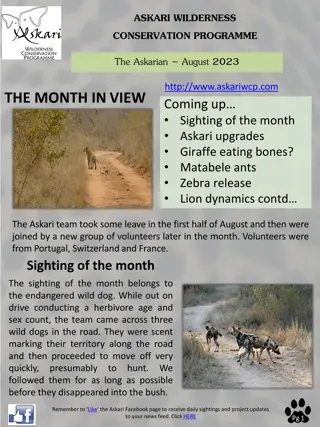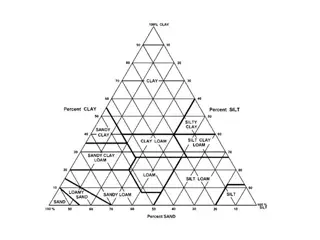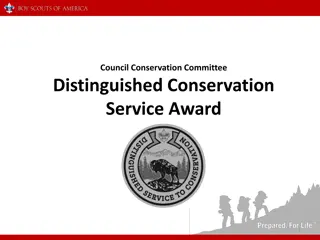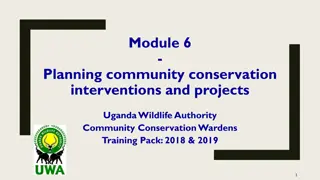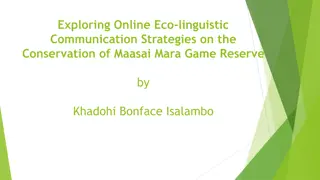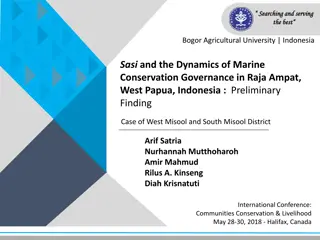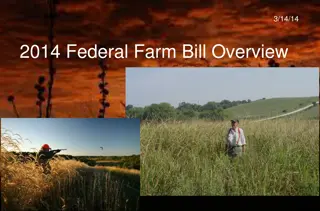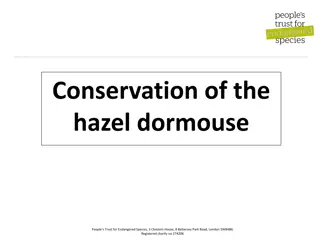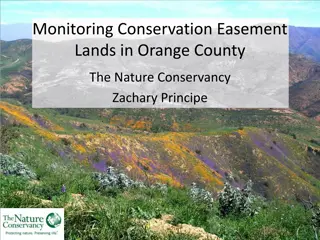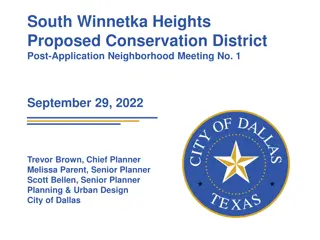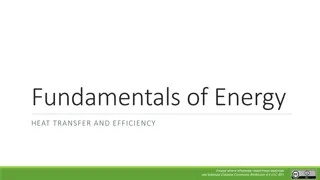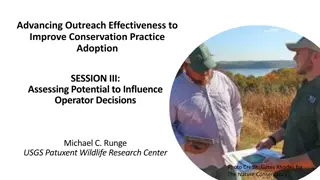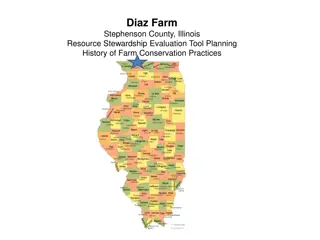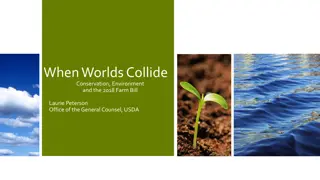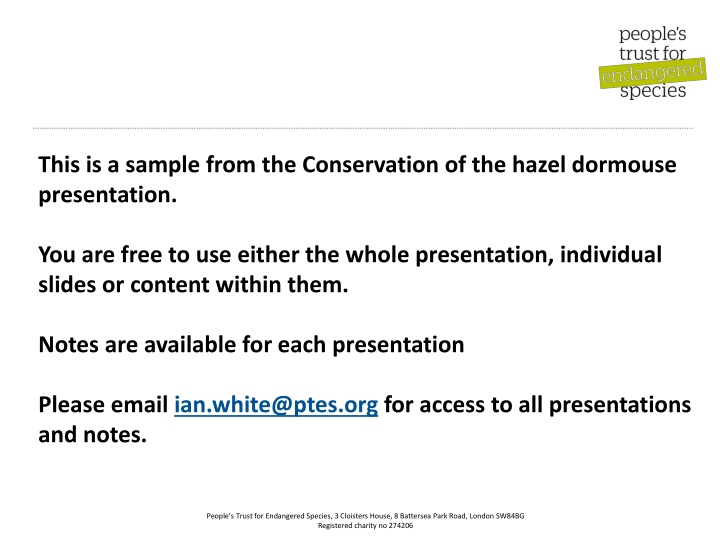
Conservation of the Hazel Dormouse
Explore the efforts and strategies involved in the conservation of the hazel dormouse, a key species vital for plant diversity in woodlands and scrub habitats. Discover methods such as dormouse surveys, nest boxes, and re-introductions to ensure the protection and restoration of this species and its habitats. People's Trust for Endangered Species is actively involved in these conservation endeavors.
Download Presentation

Please find below an Image/Link to download the presentation.
The content on the website is provided AS IS for your information and personal use only. It may not be sold, licensed, or shared on other websites without obtaining consent from the author. If you encounter any issues during the download, it is possible that the publisher has removed the file from their server.
You are allowed to download the files provided on this website for personal or commercial use, subject to the condition that they are used lawfully. All files are the property of their respective owners.
The content on the website is provided AS IS for your information and personal use only. It may not be sold, licensed, or shared on other websites without obtaining consent from the author.
E N D
Presentation Transcript
This is a sample from the Conservation of the hazel dormouse presentation. You are free to use either the whole presentation, individual slides or content within them. Notes are available for each presentation Please email ian.white@ptes.org for access to all presentations and notes. People s Trust for Endangered Species, 3 Cloisters House, 8 Battersea Park Road, London SW84BG Registered charity no 274206
Conservation of the hazel dormouse People s Trust for Endangered Species, 3 Cloisters House, 8 Battersea Park Road, London SW84BG Registered charity no 274206
Dormouse Conservation Finding Dormice Survey methods Dormouse requirements and densities Problems for the species Mitigation suggestions Dormouse re-introductions
Nest Boxes Expensive survey method Best used on vertical stems Use for long-term monitoring (NDMP) 50 boxes Grid approx. 20m apart.
Dormouse surveys - Good practice Does site fall in known range Check for existing records (LRC, NBN) Are dormice known to be present? Conduct survey Report presence of dormice to LRC
Where to look for dormouse Woodland but hazel is not crucial Conifer wood Scrub Hedgerow Small habitat areas Roadside/railside verges Dormice are probably under-recorded Dormice may be present in any wood or scrub habitat within their range
Dormouse reintroductions Why reintroductions? Substitute for natural recolonisation Restore lost range Stimulate conservation effort Focus for landscape restoration
Why are dormice good? Key species Plant diversity Shrub structure Woodlands Hedgerows Scrub Responsibility What s good for dormice is good for many other species
Peoples Trust for Endangered Species, 3 Cloisters House, 8 Battersea Park Road, London SW8 4BG Registered charity no 274206


